In Singapore, the fasting month for 2024, known as Ramadan, is scheduled to begin on 12 March 2024. Ramadan is the ninth month of the Islamic lunar calendar and is observed by Muslims worldwide as a month of fasting, prayer, reflection, and community. This period of fasting from dawn until sunset is a time for spiritual growth and increased devotion and worship.
The fasting month concludes with the celebration of Hari Raya Puasa or Eid al-Fitr on 10 April 2024, marking the end of Ramadan and a time for festive celebration among the Muslim community.
Hari Raya Puasa, also known as Eid al-Fitr, is celebrated to mark the end of Ramadan, the Islamic holy month of fasting. For the year 2024, Hari Raya Puasa is expected to be observed on 10 April 2024. This significant festival is celebrated by Muslims all around the world, including Singapore, where it is recognized as a public holiday. It commemorates the completion of a month of fasting from dawn until sunset, serving as a period of reflection, prayer, and community.
Hari Raya Puasa is a time for Muslims to show gratitude, seek forgiveness, and enjoy festive meals with family and friends, often starting the day with prayers at the mosque.
Festivity, activity, and connectivity
How is Puasa observed?
The fasting month, known as Ramadan, is observed with great reverence and communal spirit among the Muslim community. This sacred period involves fasting from dawn until sunset, where individuals abstain from eating, drinking, smoking, and engaging in sinful behaviour. The pre-dawn meal before the fast begins is called Sahur, and the fast is broken at sunset with the meal known as Iftar.
Mosques across the island hold Tarawih prayers in the evenings, which are special nightly prayers where long portions of the Qur’an are recited, allowing the community to complete the reading of the entire Qur’an by the end of the month. The observance is not just about abstaining from physical needs but is a time for spiritual reflection, improving self-discipline, and enhancing one’s relationship with Allah.
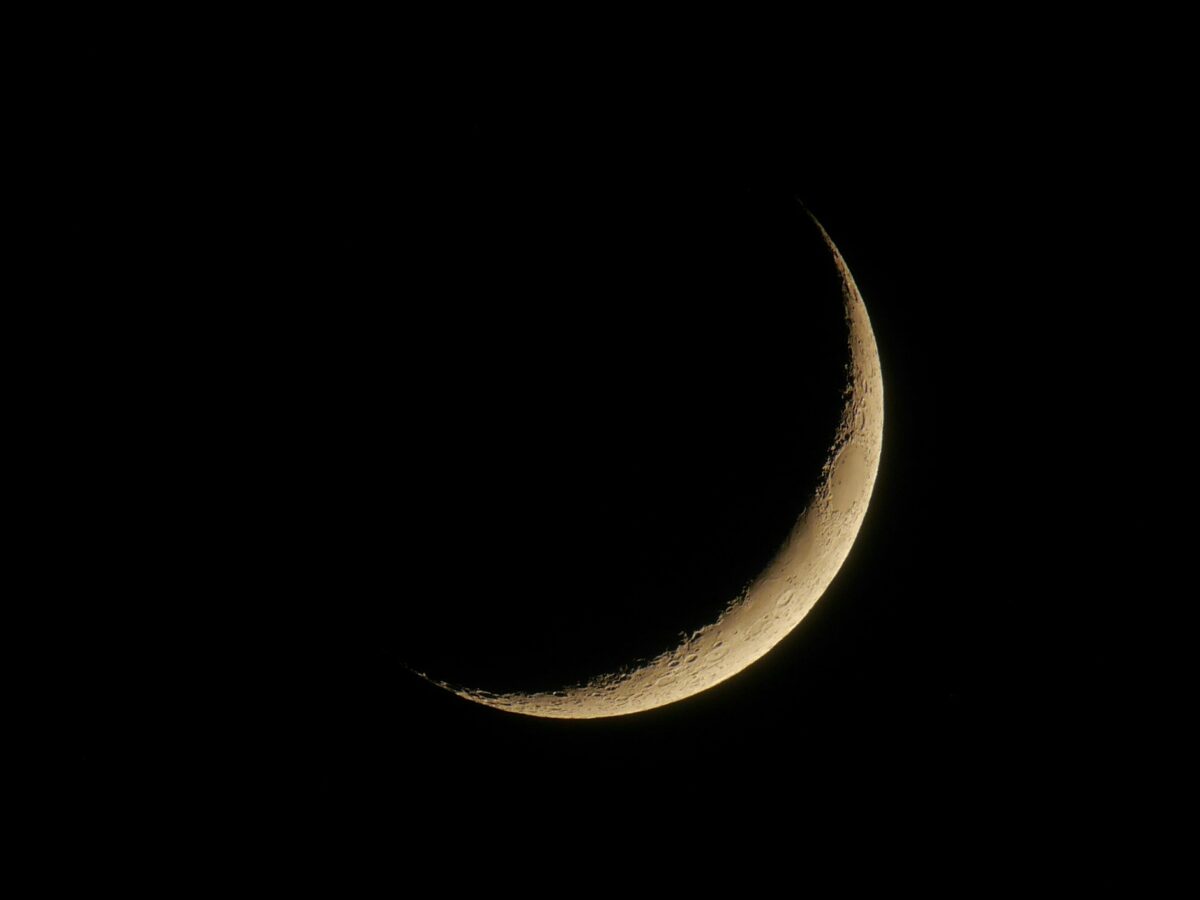
Beyond the personal aspects of devotion, Ramadan in Singapore is also marked by a strong sense of community and charity. Families and friends gather to break their fast together, often sharing meals with those who are less fortunate. The spirit of giving, known as Zakat, is emphasised, with many Muslims making charitable donations and participating in community service projects.
The vibrant Geylang Serai market becomes a focal point for festive shopping and food stalls, offering an array of traditional Malay cuisine and Ramadan essentials. This blend of devotion, community bonding, and cultural festivity makes the fasting month a significant and highly anticipated time of the year in Singapore’s multicultural tapestry.
How is Hari Raya Puasa celebrated?
Hari Raya Puasa, also known as Eid al-Fitr, marks the end of Ramadan and is celebrated with great joy and enthusiasm across the Muslim community. It is a time when families and friends come together to seek forgiveness from one another, reinforcing ties and expressing gratitude. The celebration begins with a special communal prayer held in mosques and open fields early in the morning.
Homes are thoroughly cleaned and decorated with lights, and families don new clothes, often in bright and matching colours, as a sign of renewal and purity.
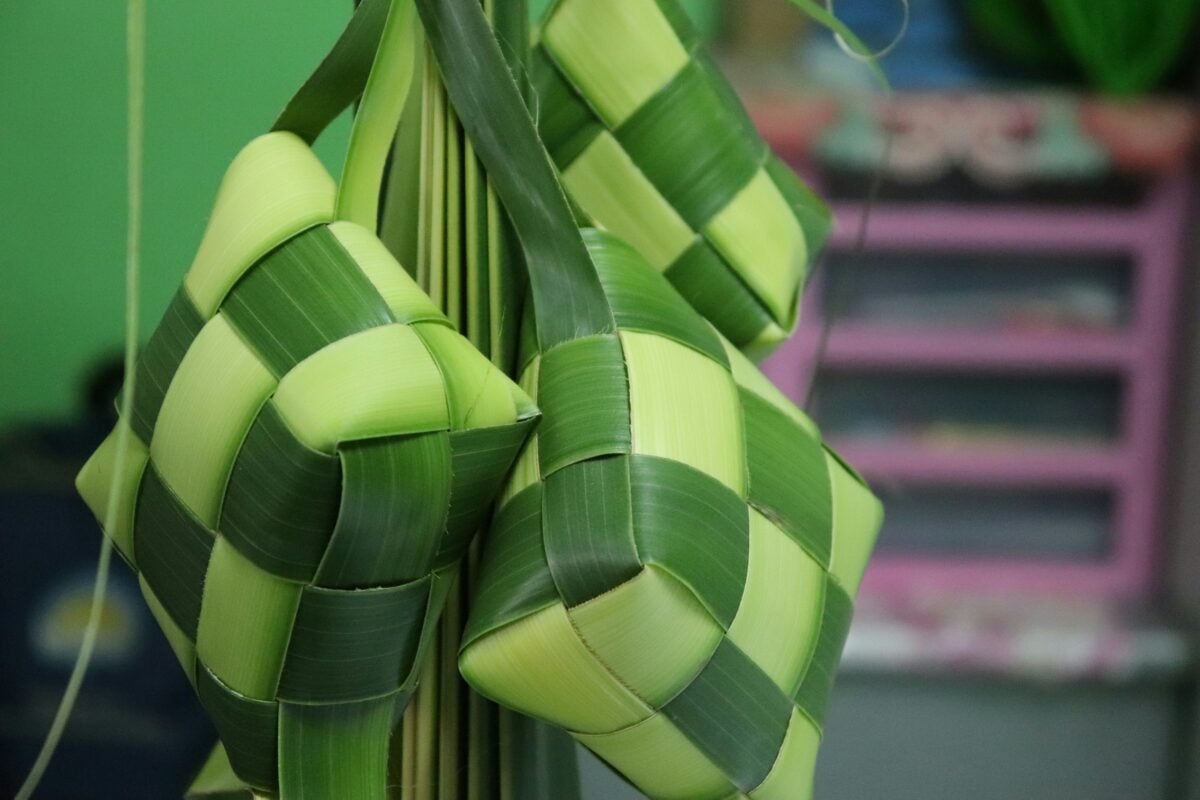
The atmosphere is one of festivity and communal harmony, with visits to the graves of departed loved ones also being a part of the tradition, where prayers are offered, and the sites are cleaned as a sign of respect and remembrance.
How to celebrate Hari Raya Puasa in Singapore?
The essence of Hari Raya Puasa in Singapore extends beyond just the Muslim community, showcasing the city-state’s rich multicultural fabric. Open houses are a common practice, where Muslim families invite friends, neighbours, and colleagues of different races and religions to share in the joyous occasion, offering a spread of traditional Malay delicacies such as ketupat (rice cakes wrapped in palm leaves), rendang (a spicy meat dish), and various kueh (sweet cakes and pastries).
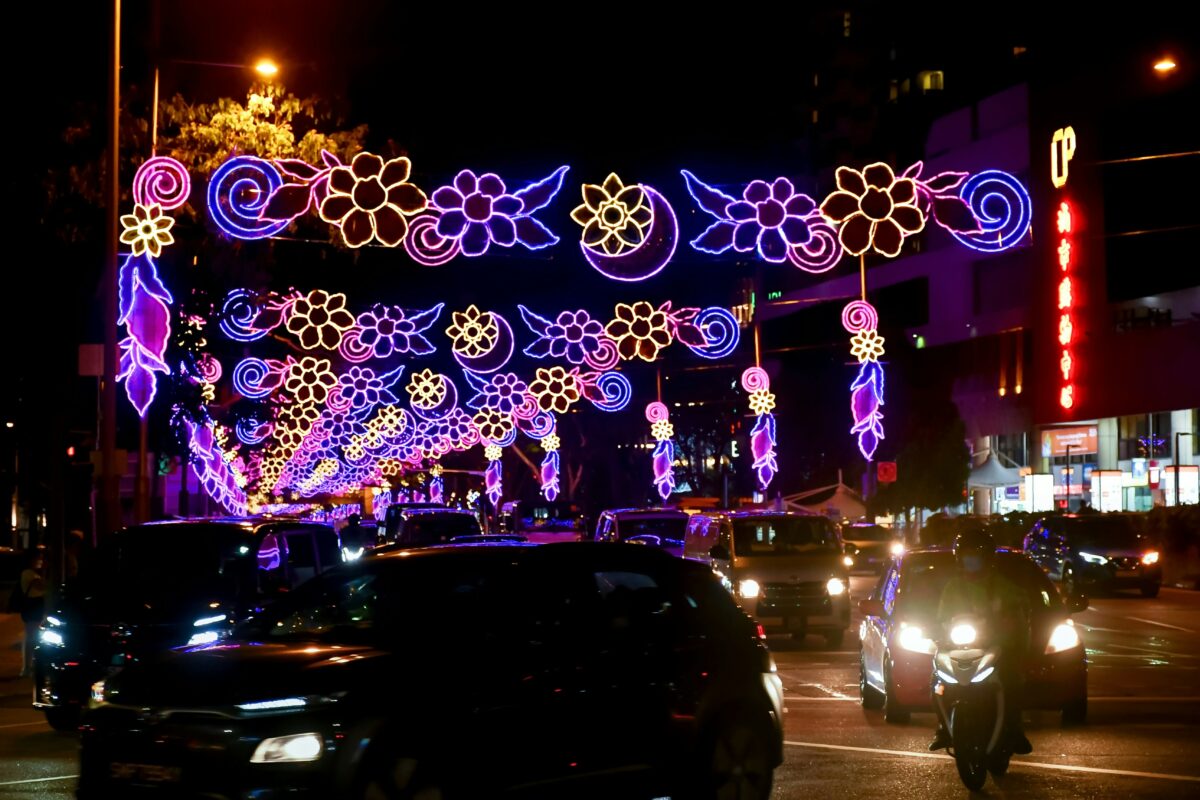
This open-door policy fosters a sense of inclusivity and mutual respect among the diverse population of Singapore. Additionally, areas like Geylang Serai and Kampong Glam are adorned with lights and decorations, hosting bazaars and cultural performances, making Hari Raya Puasa a vibrant and inclusive celebration that adds to Singapore’s dynamic cultural landscape.
Locations, connections, and conclusions
Where to go to celebrate Hari Raya Puasa in Singapore?
During Hari Raya Puasa in Singapore, the island comes alive with vibrant festivities and cultural displays, making it an ideal time for both locals and tourists to explore the rich cultural heritage of the Malay community.
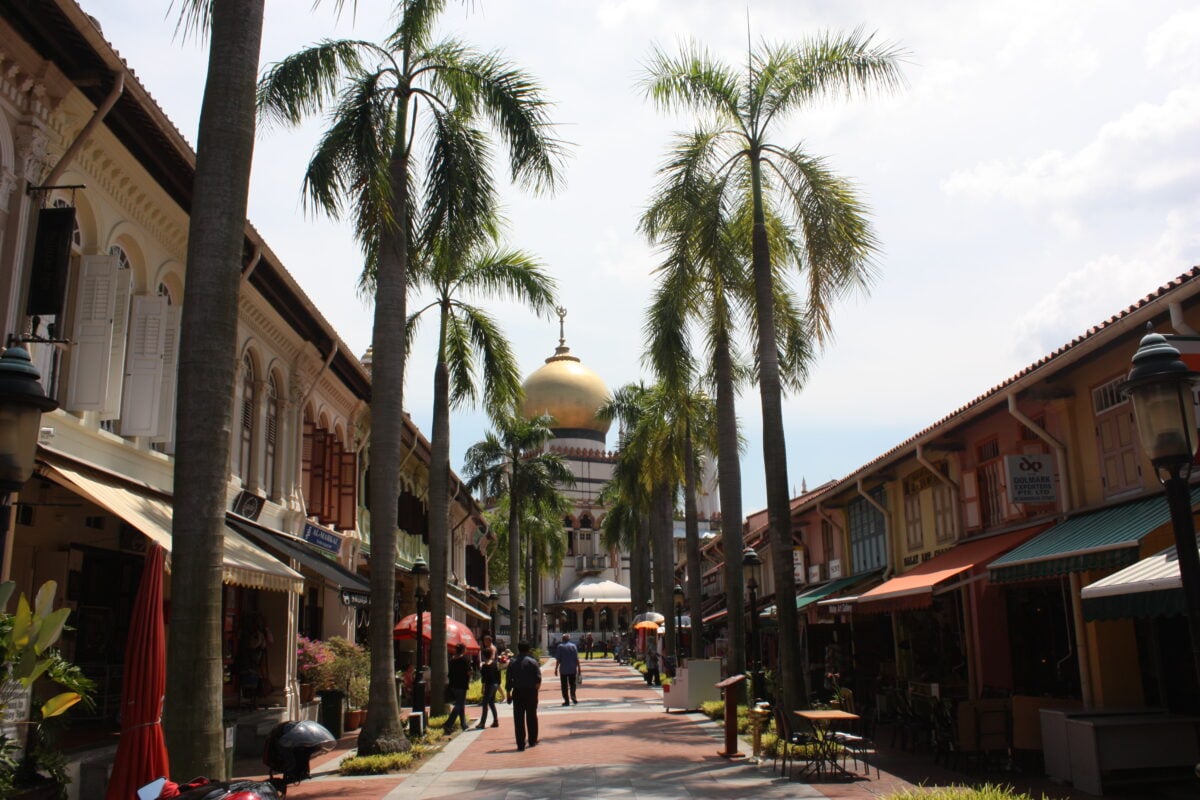
One of the must-visit places is the Geylang Serai district, known for its spectacular light-ups and bustling bazaars filled with a wide array of traditional Malay clothing, decorative items, and a plethora of food stalls offering delectable Malay and Indonesian cuisine.
Another notable spot is Kampong Glam, particularly around the historic Sultan Mosque area, where the streets are adorned with festive decorations, and the air is filled with the spirit of celebration. Here, visitors can explore the heritage of the Malay community, browse through shops selling traditional crafts and attire, and indulge in authentic Malay cuisine. These areas become focal points of celebration, offering a glimpse into the traditions and festivities of Hari Raya Puasa, making them essential destinations for experiencing the cultural diversity and communal harmony that characterises Singapore.
Properties in Geylang Serai
Who to see during Hari Raya Puasa in Singapore?
The focus is predominantly on family and community gatherings, making it an ideal time to visit relatives and close friends. It is a tradition for many to start the day by visiting the elder members of the family, such as grandparents, to pay their respects and seek blessings. This practice underscores the importance of familial bonds and respect for elders, central to the cultural and religious ethos of the Muslim community.
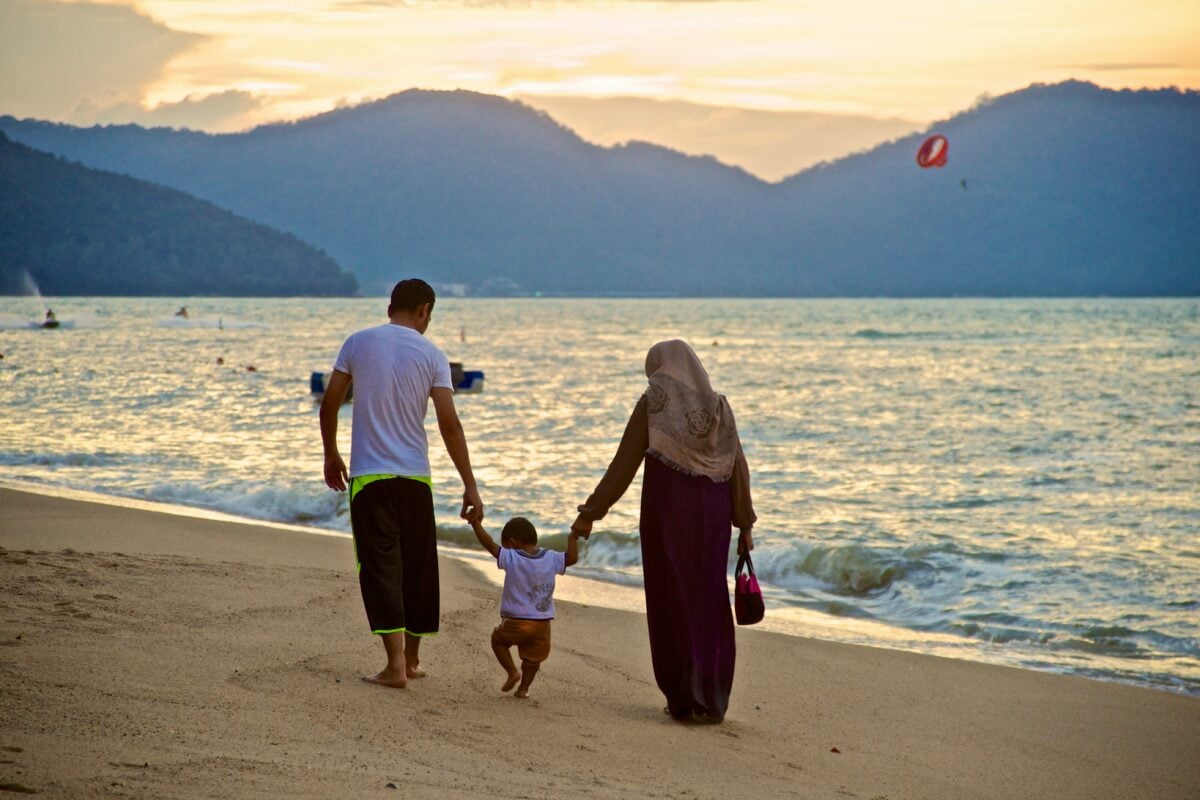
The celebration is also an opportunity for reunion with extended family members, often leading to lively and joyous gatherings where stories are shared, and connections are rekindled. Beyond family, visiting friends and neighbours, regardless of their religious background, is common, reflecting the inclusive spirit of the festival. This open-house tradition during Hari Raya Puasa strengthens community ties and fosters a sense of belonging and unity within Singapore’s multicultural society.
Saying goodbye to the fasting month
As the fasting month draws to a close, the arrival of Hari Raya Puasa ushers in a period of celebration tinged with a soft sense of reminiscence and deep gratitude. This transition is embraced with a mix of joy and contemplative reflection, as individuals bid farewell to a month dedicated to spiritual growth, discipline, and community bonding.
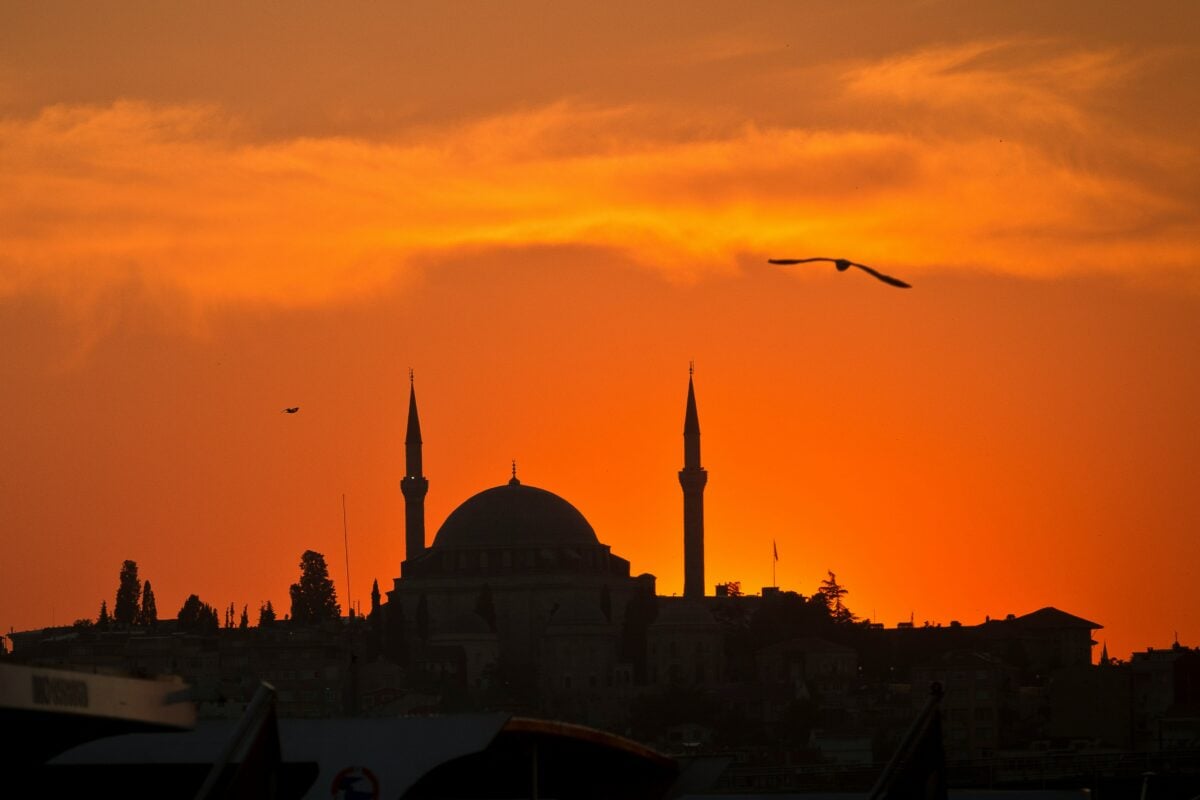
The end of Ramadan is not just a farewell to the rigours of fasting but also a time to cherish the lessons learned and the inner peace attained through this period of introspection and devotion. Hari Raya Puasa, therefore, becomes a moment of thanksgiving, a time to celebrate the strength and resilience of faith, and the blessings of family and community ties that have been reinforced and renewed.
As the Muslim community in Singapore and around the world gather with loved ones, decked in their festive best and sharing in feasts and joyous gatherings, there’s a collective appreciation for the journey of the past month—a journey that has deepened faith, fostered empathy, and filled hearts with gratitude.
Gastronomy, astrology, and everybody
Foods to eat for Hari Raya Puasa in Singapore
During Hari Raya Puasa in Singapore, the celebration is marked by an abundance of traditional Malay and Indonesian cuisine, reflecting the country’s rich culinary diversity. Among the standout dishes is the ever-popular Ketupat, rice cakes boiled in a weave of palm leaves, which symbolise forgiveness and renewal. These are often accompanied by Rendang, a slow-cooked, spice-laden meat dish that is both aromatic and rich in flavour, representing the culmination of a month’s worth of fasting and spiritual reflection.
Another favourite is the Lontong, a dish of compressed rice cake in a vegetable stew, alongside an assortment of savoury and sweet kueh (bite-sized snacks or desserts) like Kueh Lapis (layered cake) and Ondeh-Ondeh (glutinous rice balls filled with palm sugar). These dishes not only offer a taste of the region’s culinary heritage but also embody the spirit of sharing and togetherness that is central to the celebration.
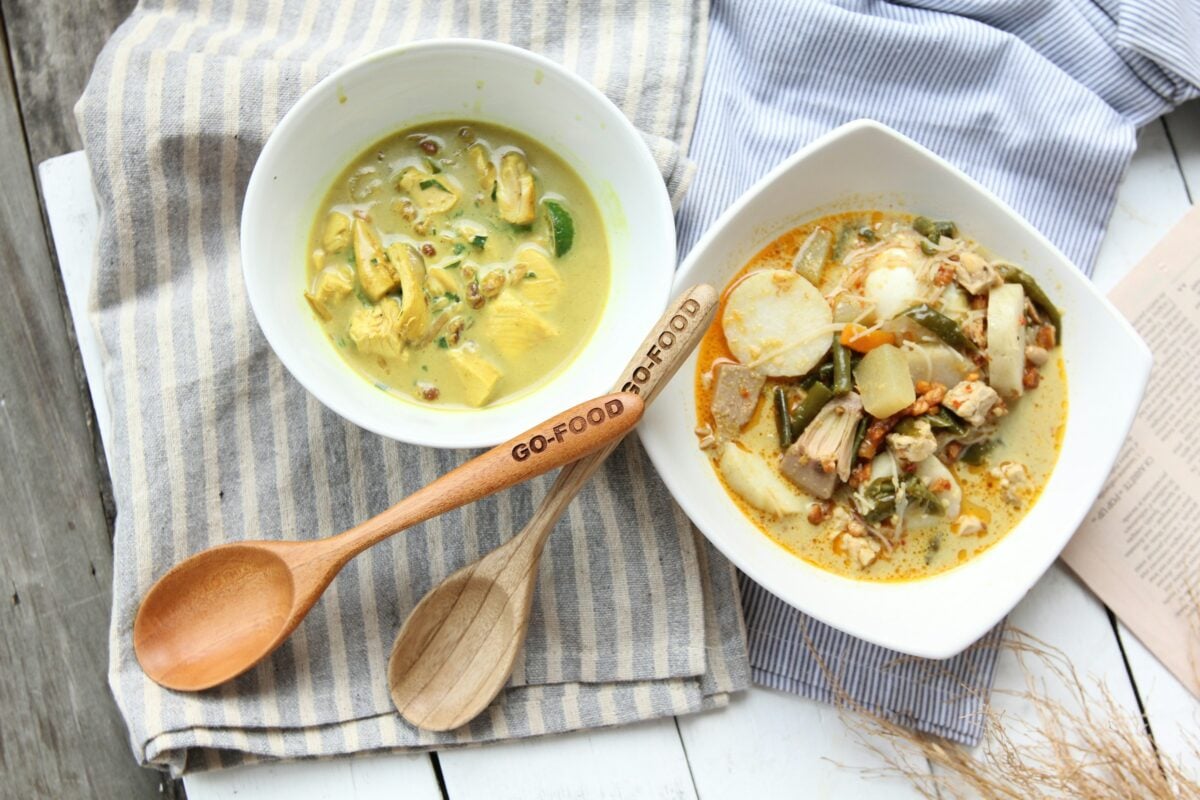
For those looking to experience these festive flavours, Geylang Serai Market becomes a hub of activity leading up to Hari Raya Puasa, with stalls teeming with fresh ingredients, ready-made dishes, and traditional sweets. Kampong Glam also emerges as a vibrant spot, where the streets are lined with eateries and pop-up stalls offering a taste of authentic Malay cuisine. Both locales not only provide a feast for the palate but also immerse visitors in the cultural richness of the celebration.
The bustling bazaars, with their colourful arrays of food, clothes, and crafts, alongside the harmonious blend of aromas from various dishes, set the perfect scene for both locals and tourists to come together to experience and celebrate the end of the fasting month with gratitude and a profound sense of community.
Introduction and recognition of celestial bodies
The fasting month of Ramadan and the celebration of Hari Raya Puasa are deeply intertwined with the observation of celestial bodies, most notably the moon, which plays a central role in determining the timing of these significant Islamic events. The Islamic calendar is lunar-based, and the start of Ramadan is marked by the sighting of the crescent moon, signifying the beginning of a month of fasting, reflection, and community.
Additional reading: Singapore prayer time, Islamic prayer times in 2024 (March – April)
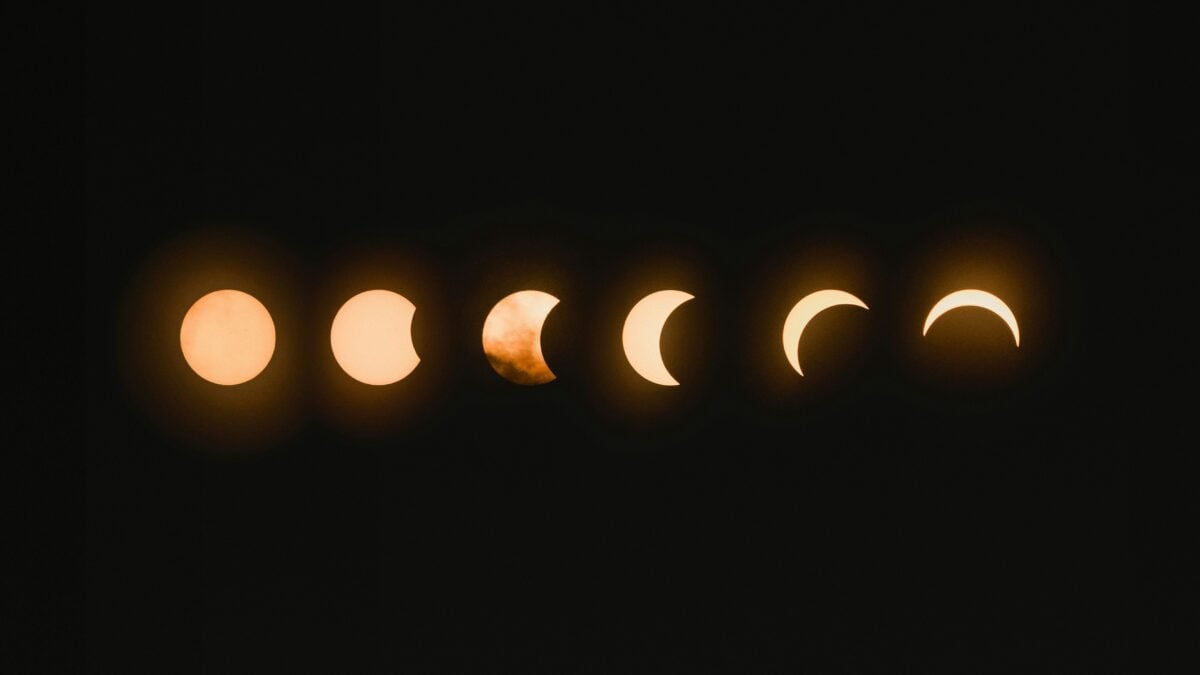
This reliance on the lunar cycle emphasises the importance of natural signs in Islamic traditions, aligning spiritual practices with the rhythms of the cosmos. Similarly, the conclusion of Ramadan and the onset of Hari Raya Puasa are also determined by the sighting of the new moon, which heralds the end of fasting and the start of celebrations. This method of relying on the lunar cycle for important religious events highlights a profound connection with the natural world, underscoring the significance of celestial bodies in guiding spiritual and communal life within the Islamic faith.
Getting together with people
Hari Raya Puasa underscores the importance of community and familial bonds through its emphasis on gatherings and shared meals. This festival is more than just a celebration of the end of Ramadan; it is a profound occasion for Muslims to come together with family, friends, and the wider community, reinforcing social ties and expressing mutual respect and love. The tradition of visiting relatives and hosting open houses is central to the celebration, allowing for the renewal of familial bonds and the creation of cherished memories.
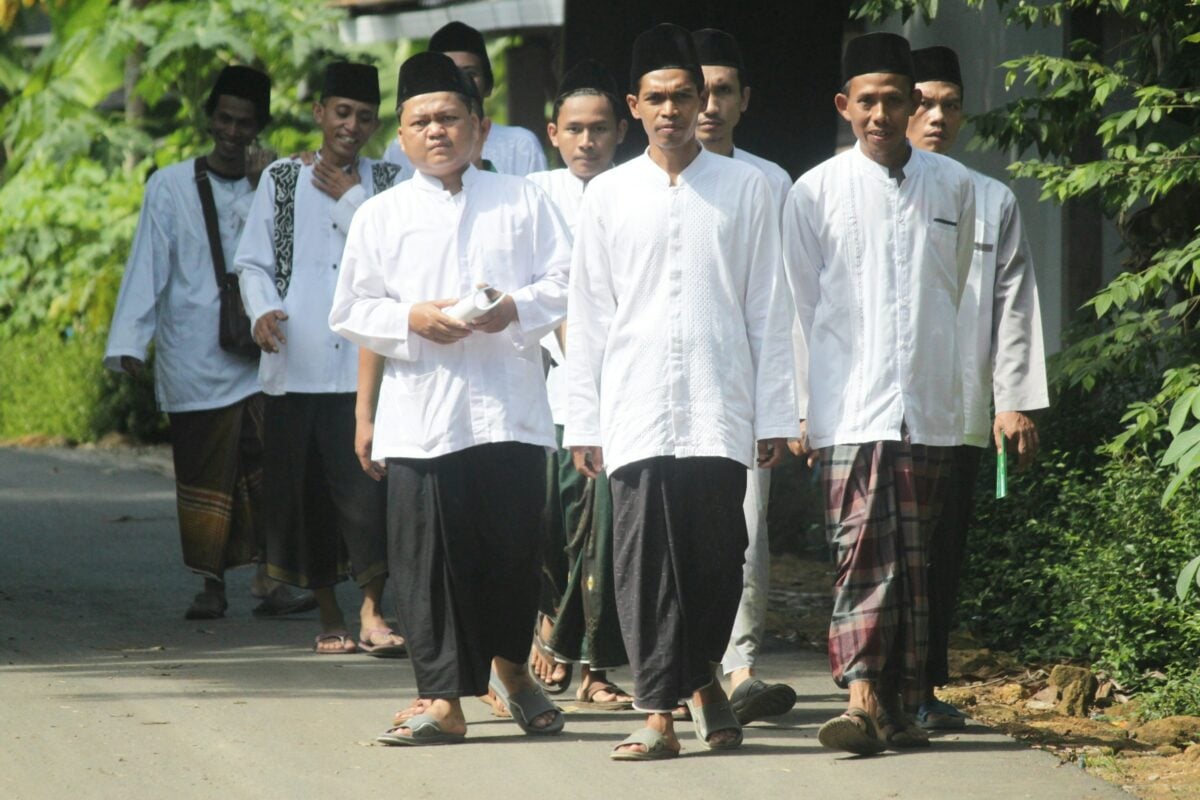
Such gatherings are not only a means to share in the joy and bounty of the feast but also serve as a vital reminder of the value of unity, compassion, and support within the community. In this way, Hari Raya Puasa fosters a sense of belonging and inclusivity, bridging gaps between generations and cultures, and strengthening the social fabric of society.
Celebrating Hari Raya Puasa in Singapore
The fasting month and Hari Raya Puasa in Singapore embody a time-honoured tradition that beautifully interweaves spiritual devotion with communal harmony. Through the practices of fasting, prayer, and reflection during Ramadan, to the joyous celebrations and gatherings of Hari Raya Puasa, these observances highlight the profound significance of faith, self-discipline, and the bonds of family and community.
The culmination of fasting not only marks a personal spiritual journey but also ushers in a festive period of reconciliation, gratitude, and shared happiness. The rich tapestry of traditions, from the sighting of the moon to the preparation of festive meals, encapsulates a unique blend of cultural heritage and religious solemnity, reflecting Singapore’s diverse societal landscape.
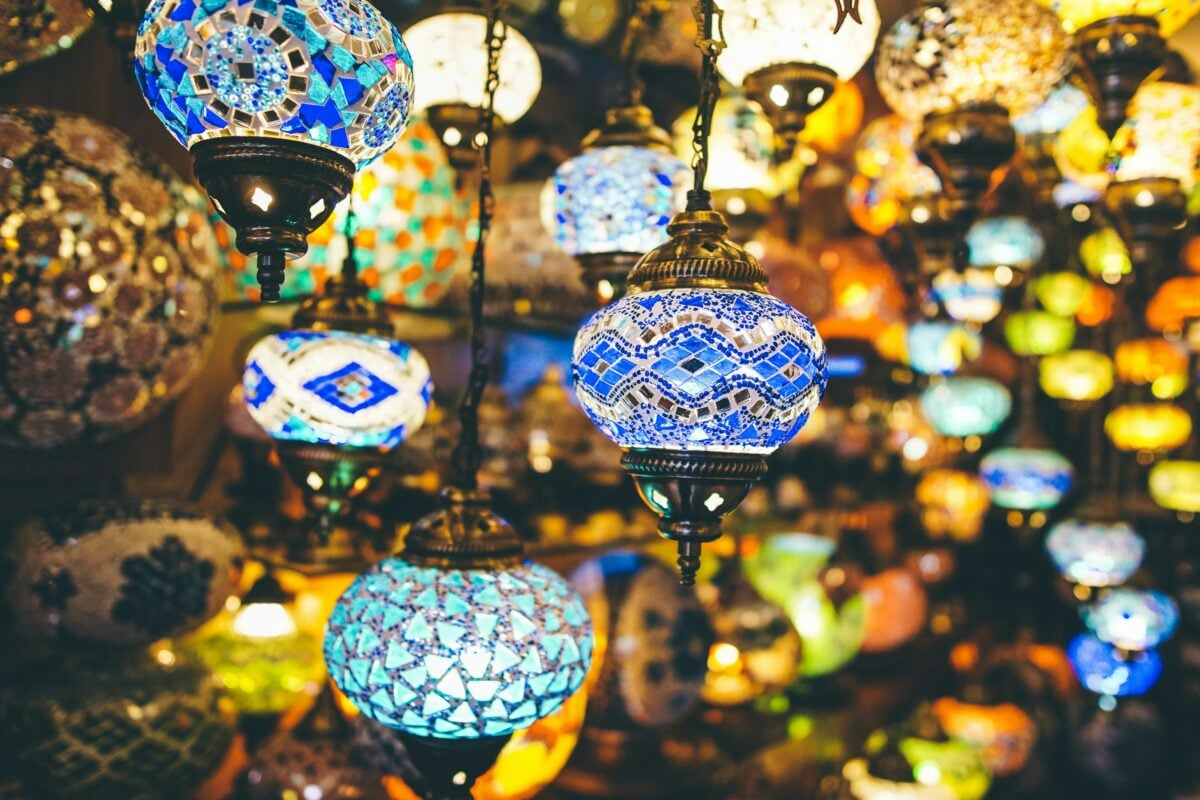
As Singaporeans from all walks of life come together to partake in and witness these celebrations, the message of unity and mutual respect is echoed across the city-state. The vibrant bazaars, the exchange of visits, and the open houses during Hari Raya Puasa serve as reminders of the country’s commitment to multiculturalism and interfaith coexistence.
Through these celebrations, Singapore continues to foster a community that values understanding, kindness, and inclusivity, making the fasting month and Hari Raya Puasa not just significant Islamic events but also a vital part of Singapore’s cultural identity and social fabric.
The post Hari Raya Puasa 2024 in Singapore: Contemplation, celebration, and cherishment appeared first on .





















